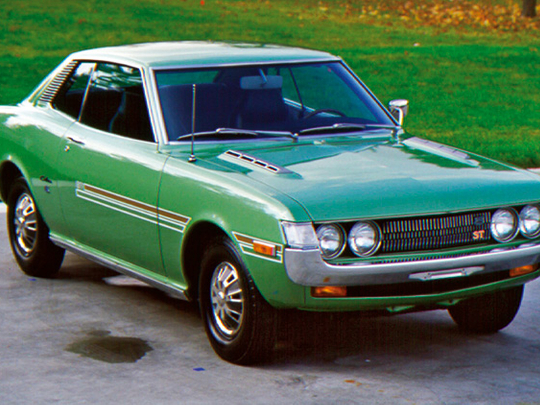
Whichever way you look at it, it's difficult to pick a current Japanese car that has the potential to be a classic in the next 40 years. Save a few noble exceptions, cars being churned out from the Land of the Rising Sun all share the character traits of blandness and styling mediocrity. But there used to be a time in the Seventies and early Eighties when Datsuns, Hondas, Mazdas and Toyotas were considered cheaper, yet vastly more reliable alternatives to American muscle and German brawn.
One such Japanese model is the Celica, which was the first affordable sporty coupé to emerge from the carmaker, which had already caught attention in the late Sixties with its 2000GT and Sports 800 coupés. Introduced in 1971, it immediately drew comparisons with the Ford Mustang. But for those who didn't appreciate the way the Mustang was growing in size, the purity of design that the Celica brought was a breath of fresh air.
Powered by the 1.9-litre 8R inline four engines, it instantly caught on not only in the domestic market, but also in the United States. Despite the fact that it shared a platform with the not-so-fun Carina saloon, it managed to bring sporty appeal to the brand.
New emissions regulations saw the Celica get a new engine the very next year; the 2.0-litre 18R-C. Toyota kept upgrading the Celica constantly with a GT model introduced in 1974 and a Liftback a year later and the model spawned many variants that were in the market as recently as 2005.
The fact that early Celicas were mechanically simple meant that most of these were eventually modified heavily. So, finding a pure Seventies Celica can be a mission. Scouring Japanese vintage car sites can be of help as there is a good chance that you may stumble upon a surprisingly good example once in a while.
Although you can get one for anything between Dh15K and Dh30K, keep in mind that sourcing major parts can prove equally tough a task, which means trying to restore one of these could involve more time, effort and even cost than reviving a European or American classic. Also bear in mind that the early Celicas were notoriously prone to rust, especially in coastal areas. So however good the car looks otherwise, expect to see rotten metal somewhere or the other.
Early transmissions included a four-speed manual and a three-speed automatic, while later ones were five-speed sticks. All are known to be bulletproof and will last as long as they're properly maintained.
So if you're lucky enough to find a well-kept original and get hold of the right parts that you're looking for, the early Seventies Toyota Celica can be a joy to own, and will help you stand out in the crowd.











